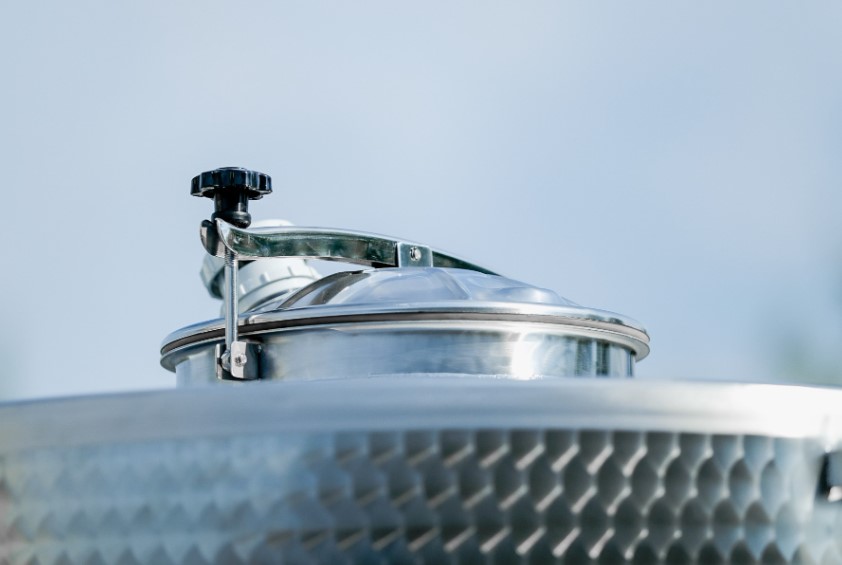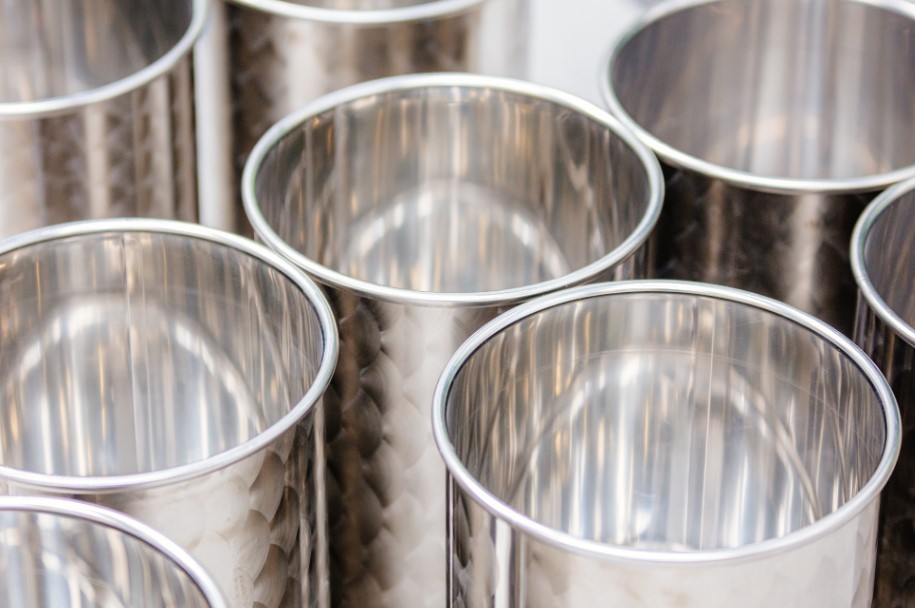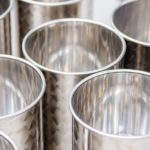
Stainless Steel – Crafting Excellence in Winemaking
In the intricate dance between craftsmanship and science that defines the world of winemaking, stainless steel emerges as a formidable ally. This unassuming material takes center stage, wielding its influence in shaping the exceptional wines that grace our tables. The prevalence of stainless wine tanks in wineries globally is not mere coincidence; it is a deliberate choice driven by a myriad of factors, each contributing to the relentless pursuit of excellence in the ancient art of winemaking. Let’s unravel the captivating tale of stainless steel’s indispensable role in this time-honored craft.

Table of Contents
Stainless Steel’s Unrivaled Popularity
At the heart of stainless steel’s ascendancy in winemaking lies its unparalleled popularity, deeply rooted in the remarkable properties that seamlessly align with the demands of the wine industry. This section explores the intrinsic characteristics that render stainless steel the material of choice for winemaking tanks. Its non-reactive nature emerges as a guardian of grape varietals’ distinct traits, ensuring that the essence of the fruit remains unaltered. Unlike alternative materials, stainless steel becomes a custodian of natural acidity, flavors, and aromas, enabling winemakers to unlock the true potential of their creations. The result is an authentic and unadulterated taste experience for wine enthusiasts seeking the purest expression of the vine.
Stainless Steel’s Shield in Winemaking
Beyond its role in preserving the integrity of wine, stainless steel emerges as a superior choice in winemaking, offering a plethora of advantages. This section delves into one of the most crucial factors—sanitation. The non-porous surface of stainless steel tanks becomes a fortress against harmful bacteria and impurities, ensuring a clean and hygienic environment for the delicate processes of fermentation and aging. Not only does this safeguard the quality of the wine, but it also streamlines the winemaking process, minimizing the risk of contamination and preserving the substantial investment of time and effort made by dedicated winemakers.
Low Maintenance, High Returns with Stainless Steel
In the realm of winemaking tanks, maintenance is a pivotal consideration, and stainless steel shines as a beacon of efficiency. This part of our exploration highlights the low maintenance requirements of stainless steel, making it an attractive option for wineries seeking operational optimization. Resistant to corrosion and boasting durability, stainless steel tanks stand resilient against the tests of time. This resilience translates into sparing winemakers from the burden of frequent replacements and repairs, ensuring a seamless flow of production and safeguarding both the quality of the wine and the resources invested in its creation.
Stainless Steel’s Cost-Effective Edge
This segment explores the economic merits of stainless steel in the winemaking landscape. While acknowledging the potentially higher initial investments, we delve into the long-term benefits that outweigh these costs. Stainless steel’s durability, coupled with reduced maintenance expenses, becomes a cornerstone for considerable savings over the years. This renders stainless steel tanks not just a choice for wineries but a sustainable and economically sound solution for the intricate art of winemaking.
From Grape to Glass – Stainless Steel’s Journey in Winemaking
In this part of our exploration, we shift our focus to the heart of the winemaking process, where stainless steel tanks play a pivotal role at various stages. From fermentation to the final presentation in a glass, stainless steel infuses its excellence throughout the winemaking journey. The spotlight falls on its temperature control capabilities during fermentation, allowing winemakers precise control to achieve desired outcomes. This not only shapes the wine’s profile but also ensures consistency, fostering the creation of distinctive and reliable wines that captivate the senses.
Stainless Steel’s Role in Cold Stabilization
Cold stabilization, a crucial step in winemaking, takes center stage in this exploration. Stainless steel’s role in this process is examined, focusing on its ability to facilitate the reduction of tartrate crystals in the wine. By maintaining low temperatures, stainless steel encourages the precipitation and settling of these crystals, resulting in a visually appealing and clear final product. This step not only enhances the wine’s appearance but also contributes significantly to its overall quality and marketability.




